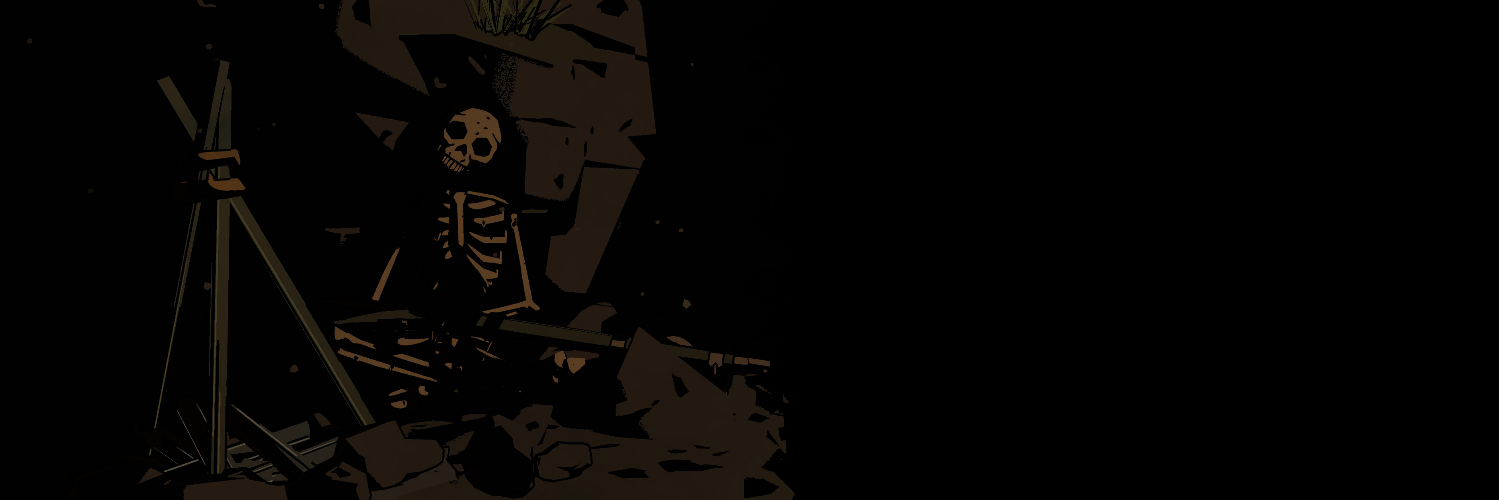
West of Dead PC Review
A few minutes in, West of Dead makes a great impression. Not only does it look like a million bucks, with a main character that truly earns its lifting of Ghost Rider’s head onto a striking design of its own. When you first start engaging with enemies and you realise how different it is from your usual twin stick shooters, it presents itself with an air of confidence that immediately makes you trust and give in to the experience. I had that feeling of electricity jumping along the surface of my skin that accompanied the first tastes of the mechanics in games like SUPERHOT and Hotline Miami – it’s preamble to a video game love affair.
However – almost each of the various ways in which West of Dead succeeds as a game has an associated issue, and while that initial boost of confidence in the game had me batting those issues away in the belief that they were accounted for and that I would eventually have the tools to keep them at bay, they only got more egregious as time went on.
But let’s not get ahead of things. West of Dead is a twin stick shooter rogue-like with perma-death, randomised levels, some persistent elements, and a Gears of War-esque cover system. It’s wrapped in a comic book styled, spooky old west presentation, and your player avatar is a recently deceased gunslinger, going through a limbo-like afterlife. Ron Pearlman voices your character, but while his performance is pretty great, it’s more of a loose narration, and there’s little actual context to what he’s saying. It’s understandable given you’ll replay the levels over and over with the layout changing each time. Nevertheless it sets a tone nicely.
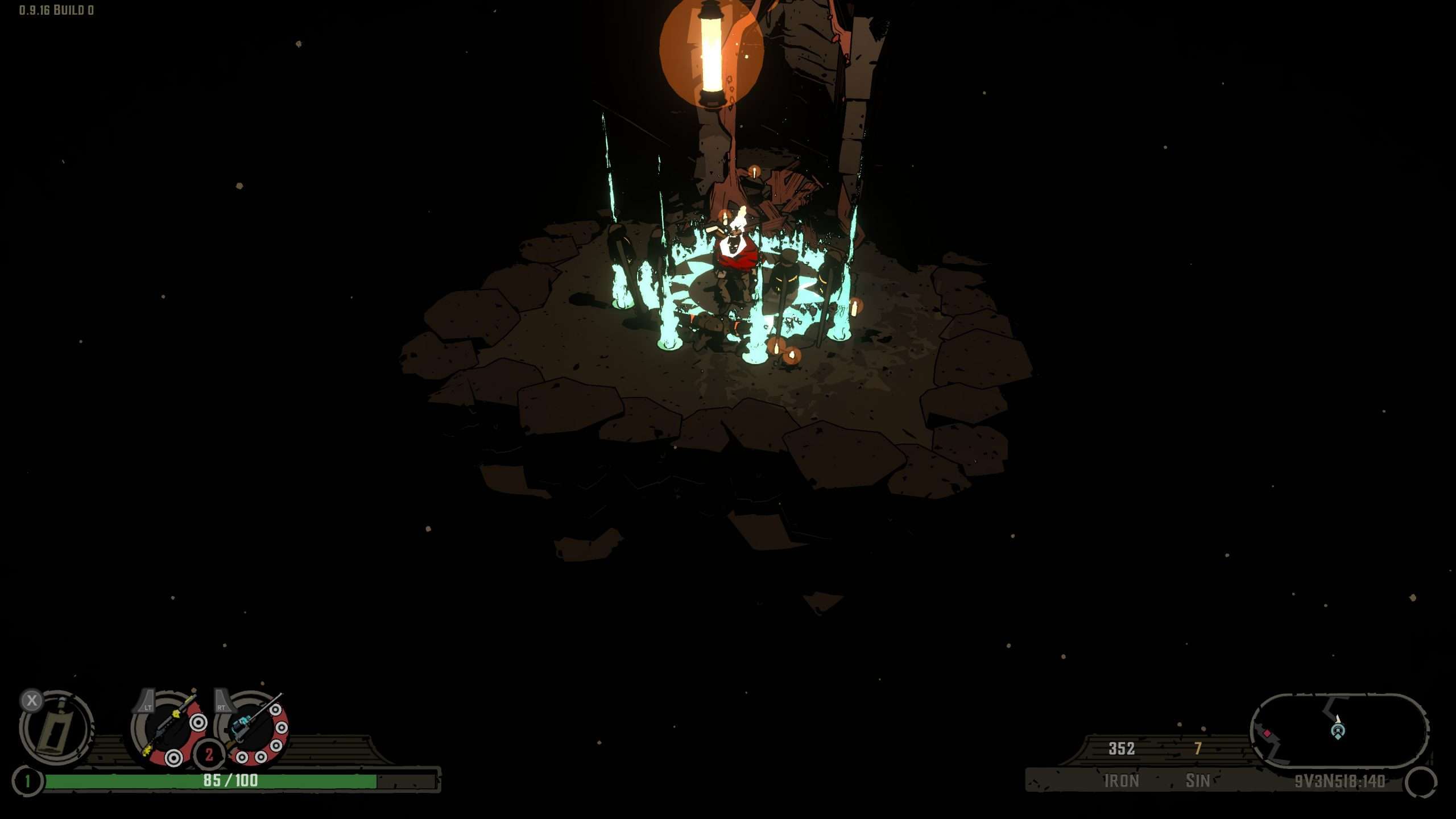
You have two slots for ranged weapons and two slots for melee and thrown ones. Weapons have different characteristics, and can cause status effects on enemies like freeze or bleed. Revolvers and rifles let you aim by holding down the fire button and waiting for an indicator to align itself properly, while shotguns require that you get up close to do big damage. Enemy types encompass rifle wielding soldiers, ghoul like creatures that throw bombs, demonic horned creatures and monstrous hounds – you know, spooky afterlife stuff.
Going through the game you earn “sin”, which you use to unlock the presence – or “drops” – of certain items and weapons in the world, as well as “iron” which lets you buy weapons at a vendor. You also find shrines at which you upgrade your character’s health, damage and abilities. The persistent elements are the ones you unlock with “sin” between levels, and you are stripped of all other progression when you die.
This still sounds like pretty standard fare, so what sets West of Dead apart? Rhythm. Pacing, but more importantly rhythm. In fact, West of Dead often feels like a semi-turn based RPG, the way encounters play out. Even though you can’t literally see a timeline with your character’s face, and your enemies’ faces, sliding along it the way you would in a JRPG of a similar style, the very measured cooldowns and delays make up a intuited version of it in your head.

The most basic aspects of it are of course ability cooldowns and reload time, both of which you decrease by taking cover, but there is always a very clear countdown involved with everything in the world. Behind cover, you are guaranteed to be safe provided the cover is between you and your enemy, but the cover can only take a set number of hits. With enemy fire occurring at very dependable intervals, followed by brief pauses for reloading, you get a very clear sense of how long you’ll be safe in cover, and you can very methodically think about what to do, where to go next, and exactly when you have to take action.
Other things come into play, too, like hanging lanterns littered across levels. As you set them alight, they illuminate enemies – which makes your aim snap to them when it otherwise wouldn’t in the dark – and doing so initially staggers enemies as well. Sometimes, you just need to buy time to do something else, like get away or reload, and blinding an enemy affords you exactly the respite you need. It becomes a strategic layer to keep some of them around until later in an encounter. West of Dead stays rhythmical like that and never becomes the all out mindless blaster that trailers suggest, and it’s better off for it.
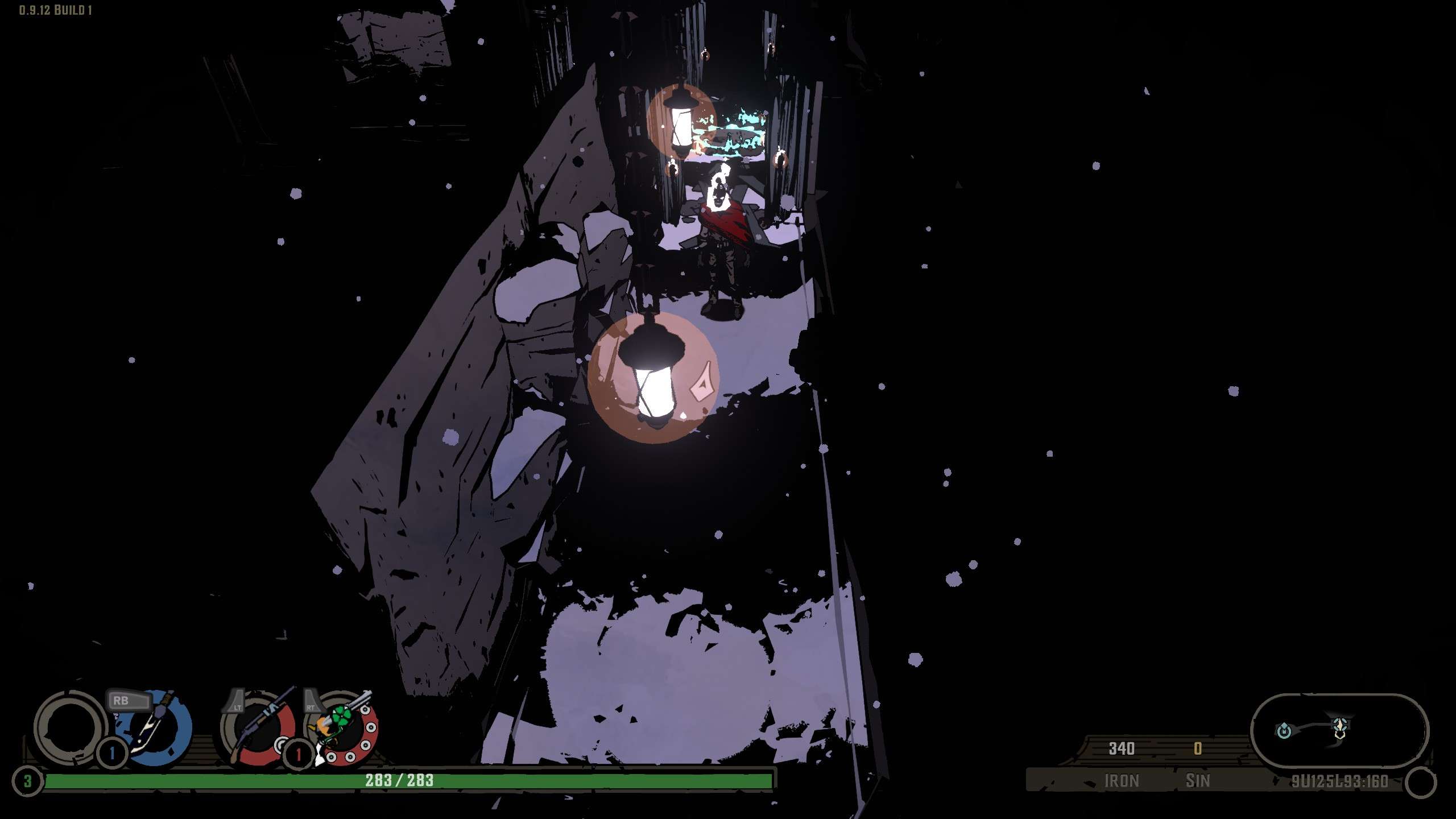
Because when you get into the dance of it, it is, frankly, exhilarating and deeply satisfying. There’s a rush in using up all your options but one – maybe a melee attack or a final round in your sawed-off shotgun – knowing that it has to land, and pulling it off in the last second, fully aware that an enemy would’ve just retaliated a split moment later.
Diving into cover and listening for your weapons to reload and letting your eyes dart around the environment to determine your path of approach – melee attacking a fast enemy that has crept up behind your cover, to buy time to shoot and kill another ranged enemy on the other side of it, and then jumping over cover to reload and shoot back at the just-recovering first enemy. West of Dead has these little moments in spades. When it comes together like that it feels kinda exceptional.
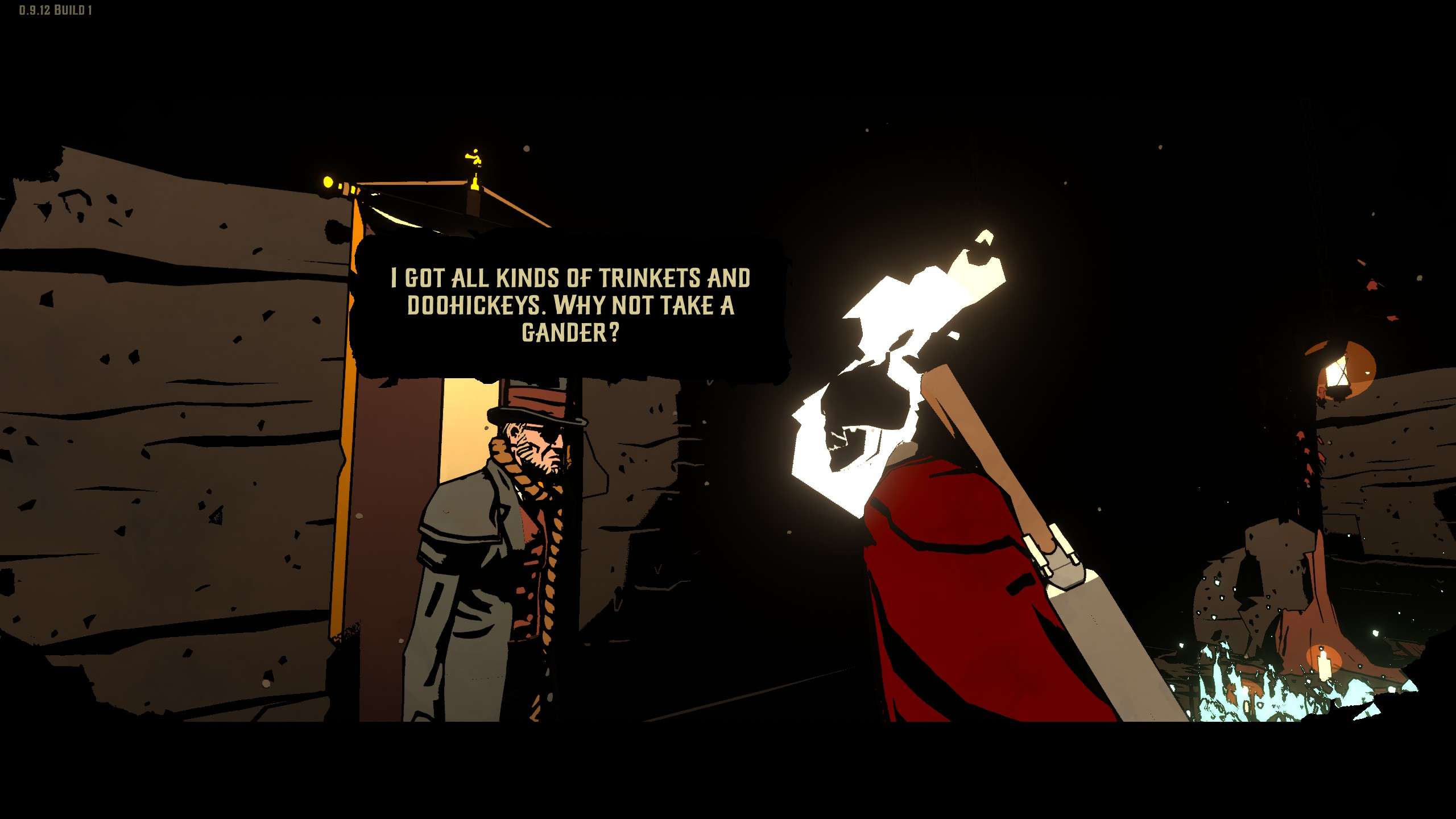
But like I was saying earlier, almost each of these elements have issues. The camera is very dynamic and spends a lot of time kinda panning and swinging around the environment. With a gamepad as the recommended input method, you always have proper 360 degree movement, so the fact that it doesn’t snap to any set angles is okay in theory. It does, however, mean that it sometimes swings in a direction you rather it wouldn’t, given that you’d rather have a good scope of your terrain than a swingy, dynamic camera. In a game where you are mostly alone and other elements that move around are usually of note, the way it burrows a hole through objects and walls, often leaving little dark chunks of the geometry seemingly sliding across the screen, is also unnecessarily distracting.
The timing of everything being so rigid means that elements that don’t adhere as strictly to predictable patterns lead to frustration pretty quickly. Not so much because they are impossible to parry, but because they feel disproportionately difficult to parry. An example of this is the dog like enemies that appear early in the game. Because they move rather quickly and without stopping, they are inherently harder to avoid than most early bosses, simply because the bosses are not as single minded and play more nicely with the overall loop of the game.
The integrity of the mechanics and how they’re implemented is also sometimes questionable. Getting close to an enemy and pressing the fire button should result in a melee attack, but sometimes this just makes you fire your weapon past an enemy. A bespoke button for close quarter attacks may have been preferable, but it’s also not uncommon for shots to simply not line up properly even when you clearly aim at enemies.

Speaking of bespoke buttons, the cover system lets you dive or slide into cover, but unlike Gears of War, the button you use to dive isn’t what actually makes you snap to cover. You snap to cover automatically by moving near it. What this does is; you sometimes run to cover, think you are in cover because the camera is showing the action from a certain angle and the chunky cel shaded art style makes it difficult to judge depth, and you take a blast right in the face. Similarly, crawling around the outside corner of cover to reposition yourself, you wiggle the stick apprehensively to try to make sure you stay crouched, but if the character gets “too far away” from the cover he pops right up to a standing position and takes a blast to the face.
Suddenly I make it sound like it’s the most broken game ever, and it really, truly is not. These things happen consistently, but not often. The game doesn’t control terribly, the camera is mostly just fine, the timing on some of the enemies is off, but nothing too offensive really.
If — this was just an action game.
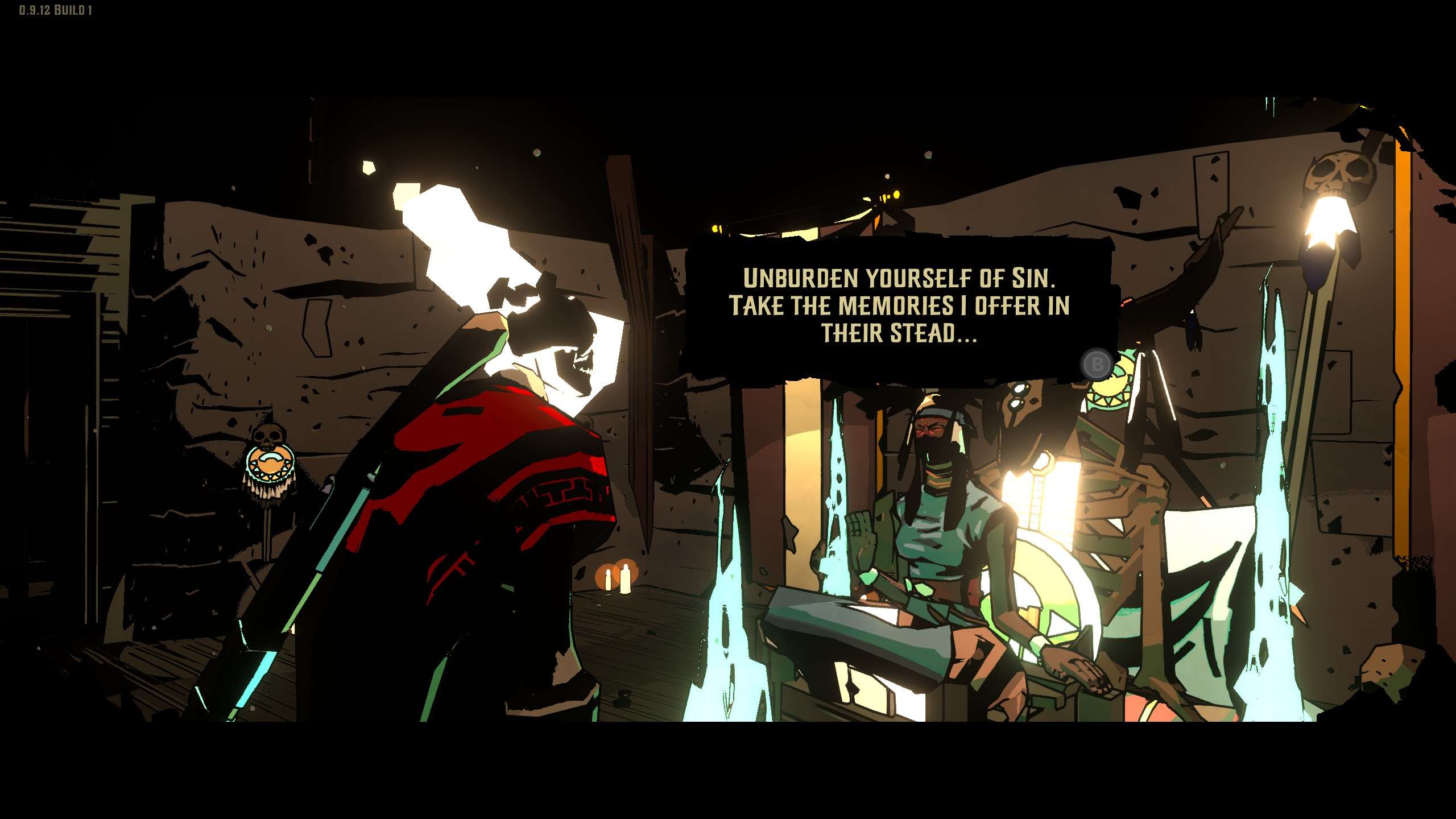
All of these things are compounded by the fact that it’s a rogue-like, and any of these small niggles, coming at an inopportune time, can and often will reset your run. That’s where it all comes tumbling down. Which, frankly, sucks. I kinda love West of Dead, the game that lies at the core of it. I would have no issue forgiving the ways in which it slips up here and there if it didn’t end up mattering so much. In fact, I have forgiven similar issues in games I ultimately consider all time greats.
SUPERHOT has rare moments where you seem to simply shoot through enemies and nothing happens, and I gave that game a 10. Why? Because in the grand scheme of things, it made up such an insignificantly small part of that experience, with super short levels that restart in a heartbeat and had you back in the same spot in no time. In the case of West of Dead, each such occurrence sends you all the way back to the beginning, and a rogue-like where your deaths consistently teach you nothing useful is just not a very good rogue-like.
It’s a shame. Put into a different, more traditional action game structure, West of Dead would be a satisfying RPG flavoured shooter with a truly inspired combination of gameplay mechanics. What’s here offers plenty of great, timing driven moments, but when saddled with conventions of the genre it has chosen to adopt, it quickly becomes an exercise in frustration and simply doesn’t hold up to the scrutiny.
